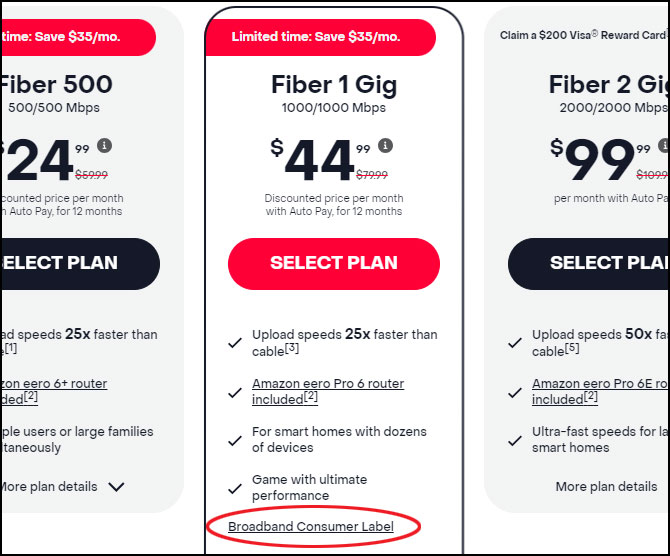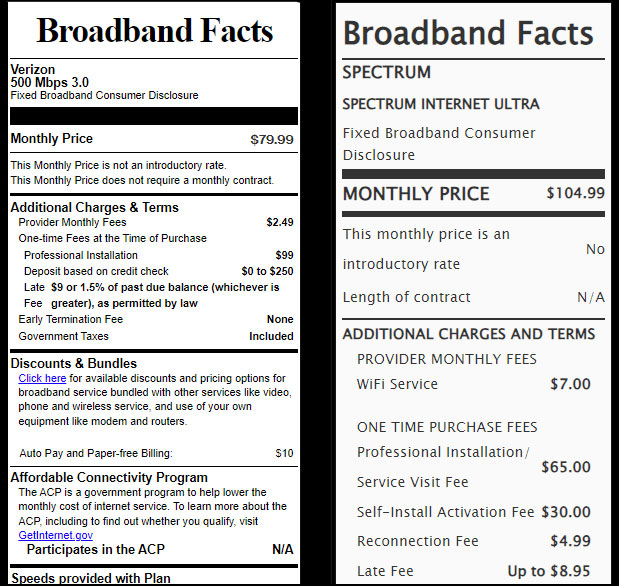Shopping for broadband internet service can feel like navigating a maze of confusing terms, hidden fees, and unclear promises. One of the biggest challenges I hear about is the lack of consistency in how ISPs present information about their plans. Some may highlight certain fees while others bury them in the fine print, making it nearly impossible to compare plans across different providers.

The Federal Communications Commission (FCC) has taken a significant step to address this issue with the introduction of new mandatory Broadband Consumer Labels. These labels, which went into effect last week, are designed to provide clear, easy-to-understand information about the cost and performance of broadband plans.
Read more: T-Mobile 5G Home Internet Offers Lots of Promise but Has Some Quirks
What the Broadband Consumer Labels tell you
So, what exactly will you find on these labels? Broadband Consumer Labels provide the basic information you need to make informed decisions about which provider and plan are right for you.
Pricing clarity
The labels detail the monthly price, including any promotional rates, fixed monthly fees, one-time charges, early termination fees, and mandated government charges. Use this transparency to understand the true cost of the service and avoid unexpected charges.
How much data you can use without penalty
Especially critical for mobile broadband internet, these labels outline the data caps and the cost per additional gigabyte. This is crucial to avoid slower speeds or overage fees.
True performance metrics
Unlike the often exaggerated "up to" speeds advertised, the labels will show the actual speeds you can expect. Understanding these metrics will help you choose a plan that matches your needs, avoiding the frustration of slow downloads or choppy video streaming.
Privacy and customer service information
They also include information on customer support and provide a link the provider's privacy policy.

Sample Consumer Broadband Labels for Verizon 500 Mbs 3.0 plan on the left and Spectrum Ultra plan on the right.
Read more: How to Get Better WiFi
While the Broadband Consumer Labels represent a significant step forward, they do have some limitations. The labels provide the same information, but the layout is not standardized, and some fees may still be confusing, even with the labels. For instance, Spectrum's "WiFi service" charge might sound like a fee for using WiFi, when it is actually a fee for renting a WiFi router.
Another drawback is that the labels only apply to standalone internet plans, which means there is no way to compare bundled services. Once you add voice, TV, cellular service, or a mix of these services, the labels won't offer an accurate comparison of prices. However, you should still be able to rely on the performance data.
The FCC has mandated that all major broadband providers must now display the Broadband Consumer Labels at the point of sale, both online and in-store. And by October 10, 2024, providers with less than 100,000 subscribers must comply with the labeling rules, ensuring consistent, transparent information regardless of the provider's size. So, the next time you're shopping for internet services, be sure to look for these labels and use them to your advantage.
Read more: Cutting the Cable Cord: A Step-by-Step Guide to Switching to Streaming
[Image credit: Screenshots via Techlicious, laptop mockup via Canva]
For the past 20+ years, Techlicious founder Suzanne Kantra has been exploring and writing about the world’s most exciting and important science and technology issues. Prior to Techlicious, Suzanne was the Technology Editor for Martha Stewart Living Omnimedia and the Senior Technology Editor for Popular Science. Suzanne has been featured on CNN, CBS, and NBC.














